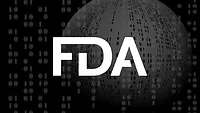FDA Announces Reorganization of IT Efforts With New Office of Digital Transformation

The U.S. Food and Drug Administration (FDA) has announced the reorganization of the agency’s information technology (IT), data management, and cybersecurity functions into the new Office of Digital Transformation. The new office has been realigned to report directly to FDA commissioner, which will elevate the office and its functions to agency-level. This will advance FDA's IT department with improved data and competencies that will improve agency operations to support the public health mission.
FDA initially started taking steps to modernize its technology and data more than two years ago, and this reorganization is a significant step in that direction. It will allow FDA to bring more effective and efficient data and IT management; to stream and advance FDA operations by reducing duplicative processes; to implement technological efficiencies using projects that deliver the most customer benefits; and to promote shared services within agency offices and centers to strategically and securely further the agency’s regulatory mission.
FDA has been undertaking a modernization effort since September 2019, with its Technology Modernization Action Plan, which laid the groundwork for the more-modern approach to the use of technology for the agency’s regulatory mission, including looking at innovative ways for the review of medical product applications, food safety, and other critical functions. That was followed by the Data Modernization Action Plan, announced earlier in 2021, which built upon the successful streamlining and process improvements started in 2019 to identify and execute high value driver projects for individual centers and for the agency. As part of the establishment of this new office, the agency is also announcing the appointment of Vid Desai as the agency’s new chief information officer.
FDA's Fiscal Year 2022 budget request included funding to support the agency’s data and IT modernization efforts for enterprise-wide data modernization, demonstrating its commitment to and the progress of these institutional changes.
Looking for quick answers on food safety topics?
Try Ask FSM, our new smart AI search tool.
Ask FSM →








